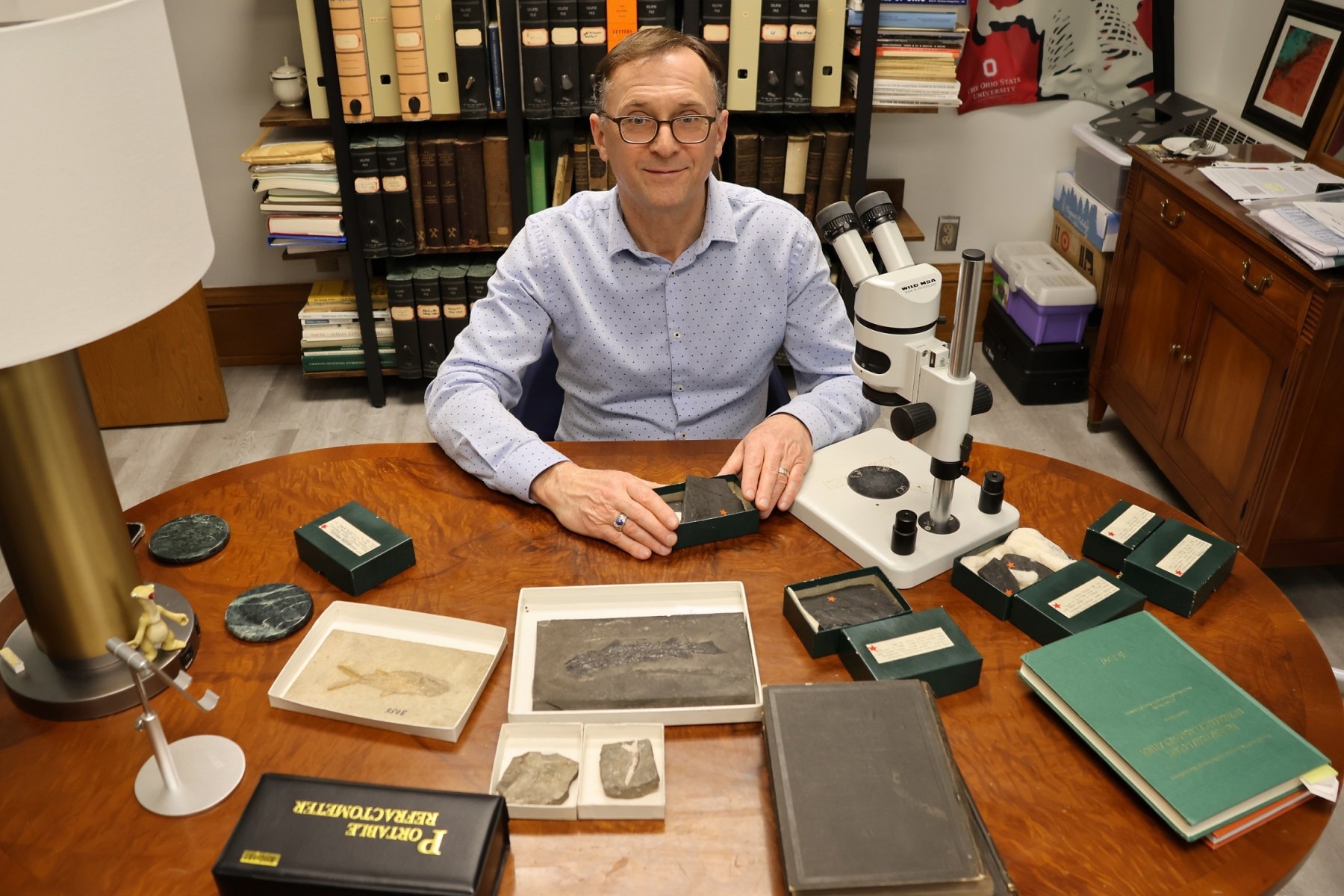Until recently, Orthacanthus gracilis might have been likened to the "John Smith" of prehistoric shark names, owing to its widespread occurrence.
 Loren Babcock with a collection of Orton Museum's fossil fishes, including several from John Newberry. Image Credit: The Ohio State University
Loren Babcock with a collection of Orton Museum's fossil fishes, including several from John Newberry. Image Credit: The Ohio State University
Paleontologists who studied and wrote about the sharks over the years were greatly inconvenienced by the false naming of three distinct species of sharks from the late Paleozoic Era, or roughly 310 million years ago.
But now that the difficult effort of identifying two of the three sharks has been completed, Loren Babcock, an Earth Sciences Professor at The Ohio State University, has also unearthed a plethora of fossil fishes that had been kept in storage at an Ohio State museum for years but had been virtually forgotten.
Babcock has to go through a procedure overseen by the International Commission on Zoological Nomenclature (ICZN) to alter the names. For the ICZN to formally approve the new names, he had to provide proof of the necessity for the name changes, suggest new names, and submit them for peer review to an ICZN-accredited publication.
It was one of the most complex naming problems we have had in paleontology, which is probably one reason no one attempted to fix it until now.”
Loren Babcock, Professor, Department of Earth Sciences, The Ohio State University
Babcock said., “A lot of scientists in the field have written, thanking me for doing this. We are all happy it is finally done.”
The importance of renaming has been demonstrated by the fact that, although being published in the journal ZooKeys, Babcock's work revealing the new names has already been cited in seven separate Wikipedia entries.
Germany is where the original Orthacanthus gracilis fossil was discovered, and it was named in 1848. The name belongs to the species.
John Strong Newberry, a well-known American paleontologist, identified the final two specimens, which were discovered in Ohio in 1857 and 1875.
The Ohio sharks were dubbed Orthacanthus lintonensis and Orthacanthus adamas by Babcock, as an honor of the location of their first discovery.
Why did Newberry Give the Same Name?
Babcock said, “He probably just forgot. It was nearly 20 years between the time the two species were named.”
As far as giving it the same name as a German species: “In those days, it was really difficult to search for names that were already in existence they did not have the internet.”
According to Babcock, the sharks themselves were amazing animals. With lengthy dorsal fins that ran the length of their backs and an odd spine that extended backward from their heads, they resembled eels rather than modern sharks. They were huge and grotesque, measuring close to ten feet in length.
During the late Paleozoic Era, in the late Carboniferous Period (323–299 million years ago), they inhabited "coal swamps" with fresh or brackish water. They are members of the xenacanthiforms, an extinct order of chondrichthyans that also contains skates, rays, and sharks.
At the Ohio Geological Survey, Newberry held the position of Chief Geologist for a while. He was a major contributor to the early development of Ohio State's Orton Geological Museum.
After examining the museum's collection, Babcock, the current director of the Orton Museum, made the decision to start the renaming process. He was shocked to discover how many of the fossils in the museum, including the two ancient sharks, had been amassed by Newberry.
Babcock published an article in the Journal of Vertebrate Paleontology discussing Orton's Newberry collection.
Over the years, scientists have written about the disappearance of many Newberry fossils. As it happened, a lot of people had been to the Orton Museum.
Babcock said, “No museum has a larger collection of Newberry’s fossils except for the American Museum of Natural History in New York City.”
Not a lot of people are aware of that – I did not even know the extent of our collection. If you are looking for part of the Newberry collection and cannot find it in the American Museum of Natural History, it is probably going to be here.”
Loren Babcock, Professor, Department of Earth Sciences, The Ohio State University
Source:
Journal reference:
Babcock, L. E. et al. (2024) Some vertebrate types (Chondrichthyes, Actinopterygii, Sarcopterygii, and Tetrapoda) from two Paleozoic Lagerstätten of Ohio, United States of America. Journal of Vertebrate Paleontology. doi:.org/10.1080/02724634.2024.2308621.